Meal Prep Guide: How to Store Prepped Vegetables
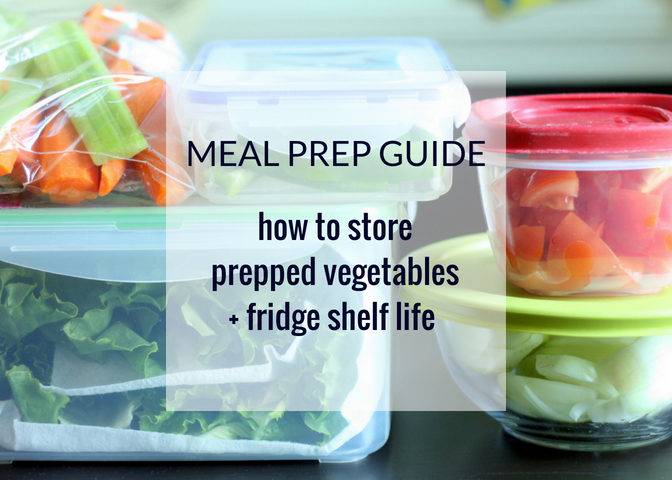
You’ve mapped out a dinner plan and shopped for groceries. Now you plan to get ahead by chopping vegetables to have at the ready when it’s time to cook. Before you do, read up on how to best store them to ensure they’ll be as delicious on day three as the day you bought them. #savetheproduce
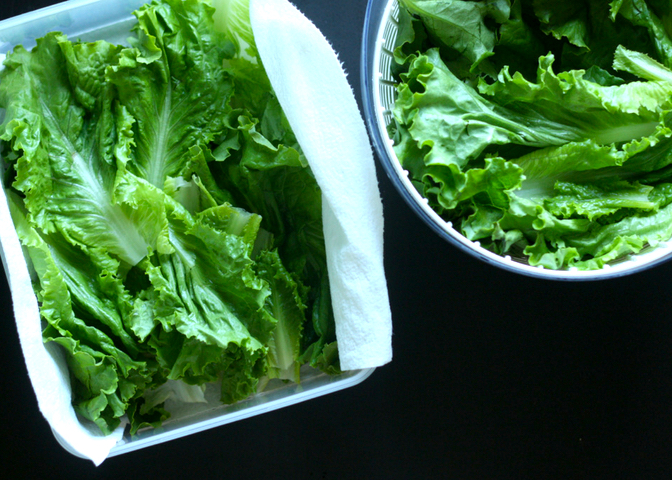
LEAFY GREENS As soon as possible after purchasing, wash, dry, and store fresh greens. A salad spinner is totally worth a little pantry real estate. Otherwise, after rinsing greens well in a large bowl of cold water, line sheet pans with clean towels or paper towels and allow greens to dry in a single layer.
To store: Store washed and dried greens in paper-towel lined zip top bags or containers.
If you purchase pre-washed greens, line the bag or clamshell container with a couple paper towels. This can extend shelf-life a few days, especially for baby or micro greens that tend to go slimy earlier than heartier greens, like romaine or kale.
Fridge shelf life: 1-2 weeks for hearty greens and up to a week for spring greens and microgreens.
CRUCIFEROUS (broccoli, cauliflower, brussels sprouts) While we tend to consider them relatively hearty, cruciferous vegetables can quickly turn once prepped. Stored the right way, fresh cut broccoli, cauliflower, and Brussels sprouts will keep for about 4 days.
After rinsing the vegetables, remove as much moisture as possible before storing. Cutting a rinsed head of broccoli or cauliflower into florets will allow moisture to escape and prevent spoilage.
To store: Store chopped fresh broccoli and cauliflower or trimmed Brussels sprouts in a glass or plastic container with a slightly vented lid, or cover loosely with plastic wrap or a paper towel. Allowing a little air flow will help keep these vegetables tasting fresh.
Fridge shelf life: 3-4 days
STEMS (celery, asparagus) While celery tends to be heartier than asparagus, if prepped and stored properly, both can last a good week in the fridge.
To store: Store cut celery in a paper towel-lined airtight container or zip top bag. Trim an inch off the bottom of asparagus and store upright in a glass containing an inch of water. Cover loosely with a plastic bag. If you plan to cook asparagus within 48 hours, you can trim and cut per recipe, then store like celery (no water bath necessary).
Fridge shelf life: Up to a week
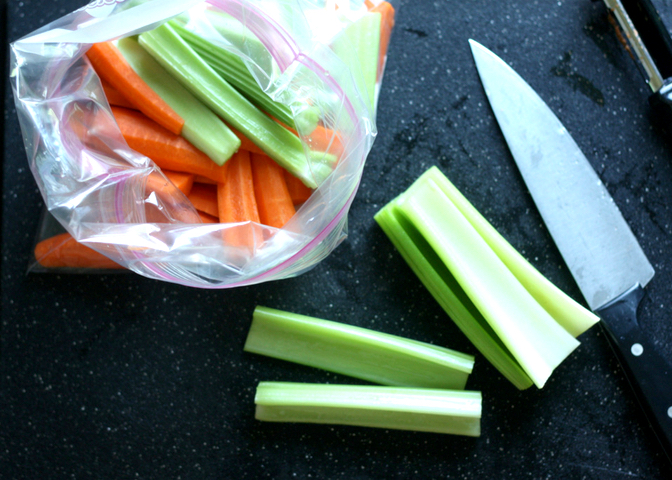
ROOT VEGETABLES (carrots, parsnips*, beets) Fresh cut root vegetables like carrots and parsnips are hearty and keep well for about week. *Parsnips will become slightly brown when cut in advance (storing in water will help reduce browning).
To store: Refrigerate chopped carrots or parsnips to be cooked later in a sealed glass or plastic container. Store cut carrots to be eaten raw in either a covered dish of water or in a container lined with a damp paper towel to help them stay crisp. Store raw beets similarly, but treat the beet greens like lettuce/greens if you plan to cook and eat them.
Fridge shelf life: 5-7 days
SWEET POTATOES AND YAMS Opinions are mixed on how to best store raw, cut sweet potatoes and yams. For years, I’ve stashed raw prepped sweet potatoes (skin on or off) in covered containers in the fridge without issue. Some argue they should be stored in a container of cold water, I suspect to prevent oxidation. Sweet potatoes and yams will oxidize a bit but not nearly as much as potatoes (which I don’t recommend be prepped in advance). Do what makes sense to you.
To store: Store cut sweet potatoes and yams in covered plastic or glass containers in the fridge.
Fridge shelf life: 3-4 days
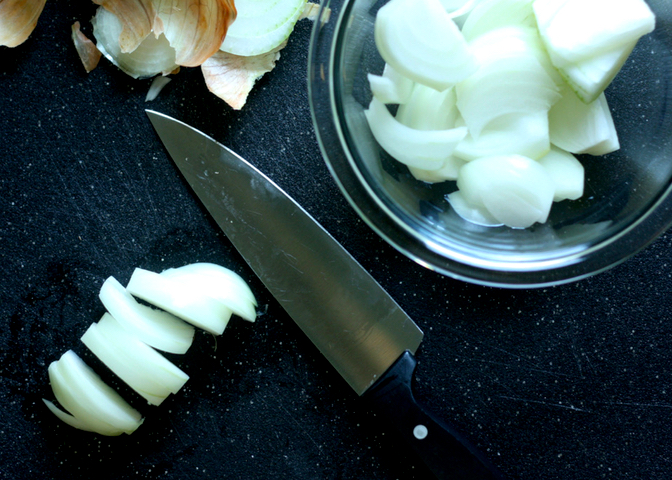
ALLIUMS (onions, shallots, green onion, garlic) I use chopped onions in so many recipes. Because chopped onions last a surprisingly long time in the fridge, I’ll chop up a couple to have on hand for pasta sauce, stir fry, and soup. The trick is containing the smell! Avoid storing chopping onions in plastic containers because they can absorb the odor.
To store: Store chopped onions, shallots, and garlic in an airtight glass container with tight-fitting lid. Store chopped green onions in a paper towel-lined glass container with a tight fitting lid.
Fridge shelf life: 5-7 days for onions and shallots; 2-3 days for green onions and garlic
LEGUMES (string beans, sugar snap peas) When stored properly, I’ve found prepped green beans and snap peas last longer than when stashed away in the original grocery store bag. Moisture control (i.e. lining the storage container with a paper towel) reduces how quickly beans become moldy and slimy.
To store: Store trimmed green beans and snap peas in paper towel-lined airtight container or zip top bag.
>> Do you know how to trim sugar snap peas? Check this out.
Fridge shelf life: 3-4 days
HARD SQUASH As you’d expect, hard winter squash, which can live for weeks on your counter, keeps well in the fridge once peeled and chopped. The following applies to acorn, butternut, delicata, kambocha, and the like.
To store: After peeling, removing seeds, and cutting, store hard winter squash in a covered glass or plastic container in the fridge.
Fridge shelf life: About a week
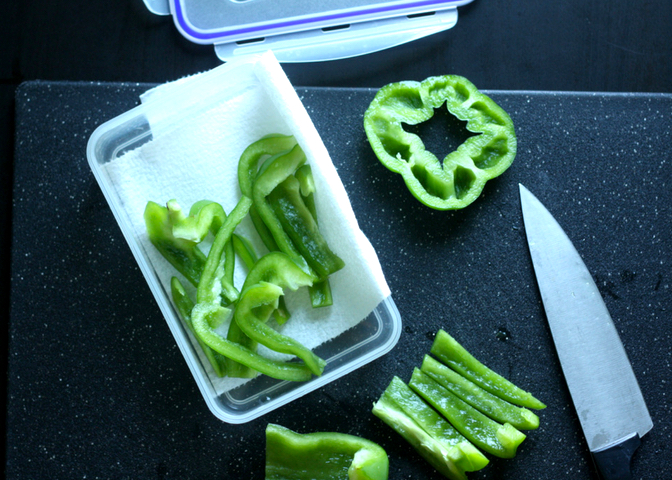
“SOFT” PRODUCE (bell peppers, tomatoes, summer squash, cucumbers) As you might expect, the higher the water content, the quicker prepped vegetables will turn. While a sliced bell pepper likely won’t last a full week without going slimy, they’ll hold out for a few good days. Plan to use softer produce earlier in the week and save heartier produce for Thursday and Friday.
To store: Store cut peppers in a paper towel-lined airtight container or ziptop bag. Cut tomatoes and summer squash should be stored in airtight containers.
Fridge shelf life: 2-3 days
Are there any vegetables that shouldn’t be prepped in advance? I’m glad you asked. Yes. For one reason or another, including discoloration, loss of moisture, quicker spoilage, etc., I don’t recommend prepping any type of white potatoes, mushrooms, or eggplant in advance.


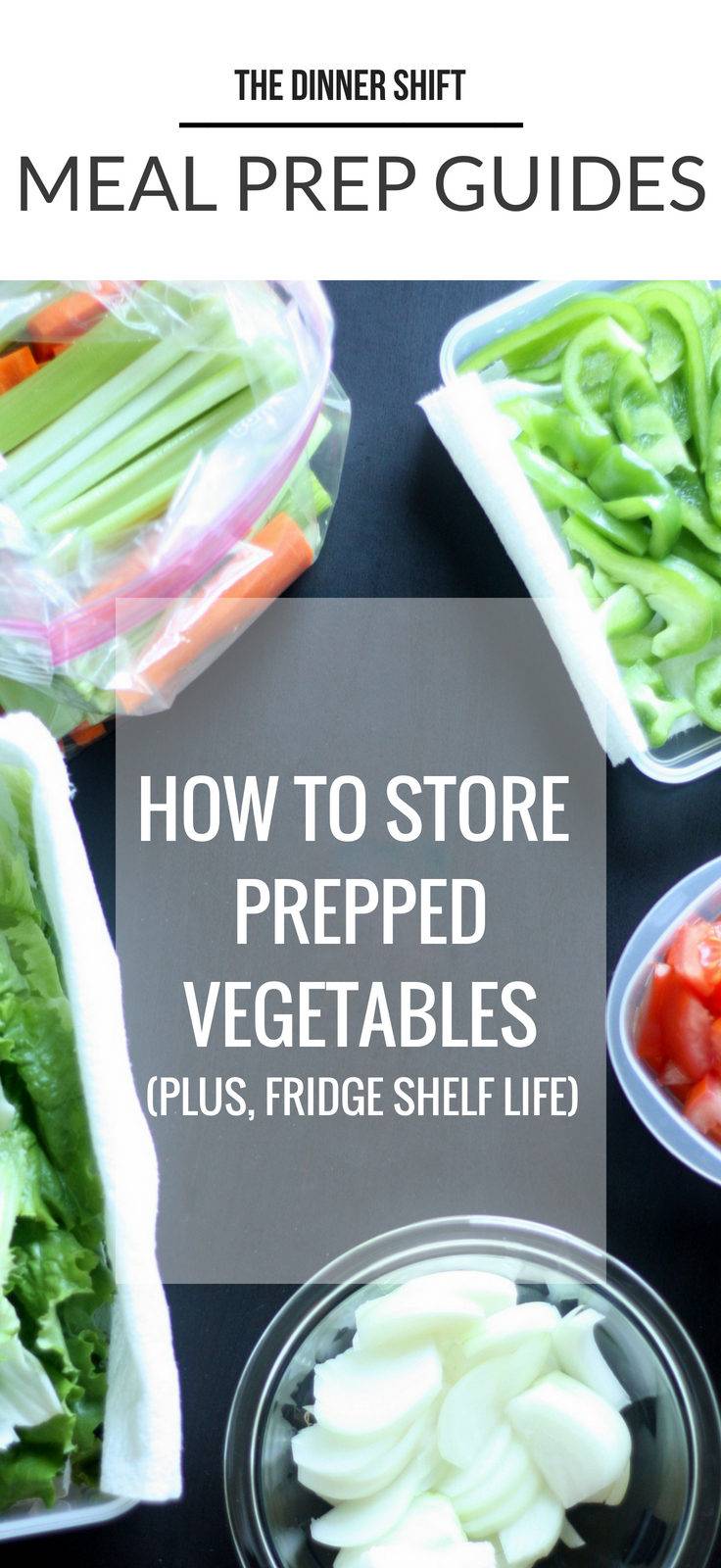
Lots of good info here.
Thanks for sharing.